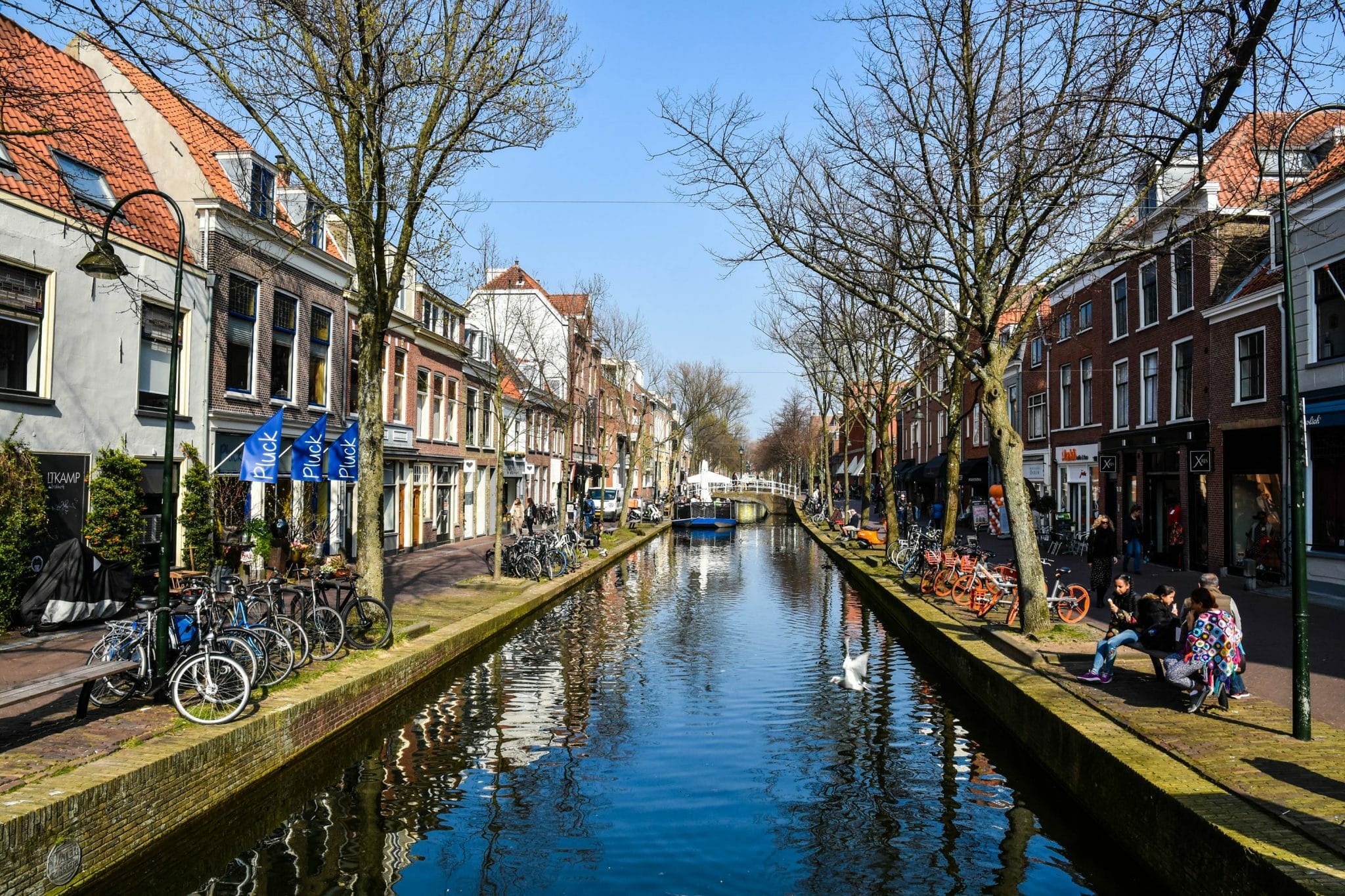“What land is this? Yon pretty town is Delft, with all it wares displays: The pride, the market-place, the crown And centre of the Potter’s trade.”
Henry Wadsworth Longfellow
- Where is Delft in the Netherlands
- Where to Start Your Visit
- Our First Impressions
- History Because to Know is to Understand
- William of Orange
- The Delft Explosion
- Fun Facts
- The Famous Blue Earthenware of Delft
- 12 Things to See and Do in Delft, Netherlands
- Shopping and Eating in Delft
- Where to Stay in Delft, Netherlands
- Getting to Delft, Netherlands
- What is the Weather like in Delft?
- Final Thoughts
- Our Delft Photo Gallery
- Our Top Recommended Travel Products
Traveling to Delft, Netherlands, is a must-do delight during any visit to South Holland. The Netherlands has so many beautiful things to see, and Delft is one of the more popular destinations to visit while in the country. The charm and vitality of this city are immediately apparent. The residents exude a strong sense of community, which is heartwarming. Children were giggling and running everywhere. Families were enjoying the park; friends were having drinks along the canal, and bikes were everywhere!! Though it seemed we were invading their private world at first, all our interactions with locals were warm and welcoming.
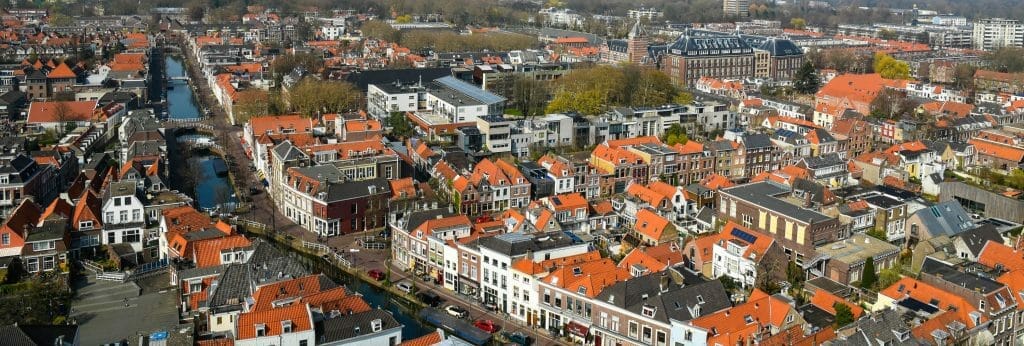

Where is Delft in the Netherlands
Delft is a charming city located in the western part of the Netherlands, nestled between Rotterdam and The Hague in the province of South Holland. It is conveniently situated just 6 miles north of Rotterdam and approximately 9 miles southwest of The Hague. The city’s central location makes it easily accessible from other major Dutch cities, with Amsterdam about 37 miles to the north and Utrecht around 25 miles to the east.
Whether you’re coming from a nearby city or venturing from farther afield, Delft’s proximity to these key destinations makes it an ideal spot for a day trip or extended visit.
Where to Start Your Visit
As you approach Delft, you’ll enter the historic heart of the city through the southeast corner, where the iconic Oostpoort awaits. This 15th-century city gate, with its twin Gothic spires rising above the waterway, offers a charming introduction to the city’s rich heritage.
Delft is a vibrant blend of history and culture. It is filled with magnificent churches, an impressive old town hall, and a large town square surrounded by lively cafes and bars. The city is adorned with beautiful brick and stone architecture that spans centuries, creating a quintessential Dutch atmosphere.
Delft makes for a perfect day trip, but if you’re lucky enough, you can stay overnight and continue to explore its unique charm.
So, come join us—enter through the gate, walk the cobbled streets, and let’s experience the delightful city of Delft together.
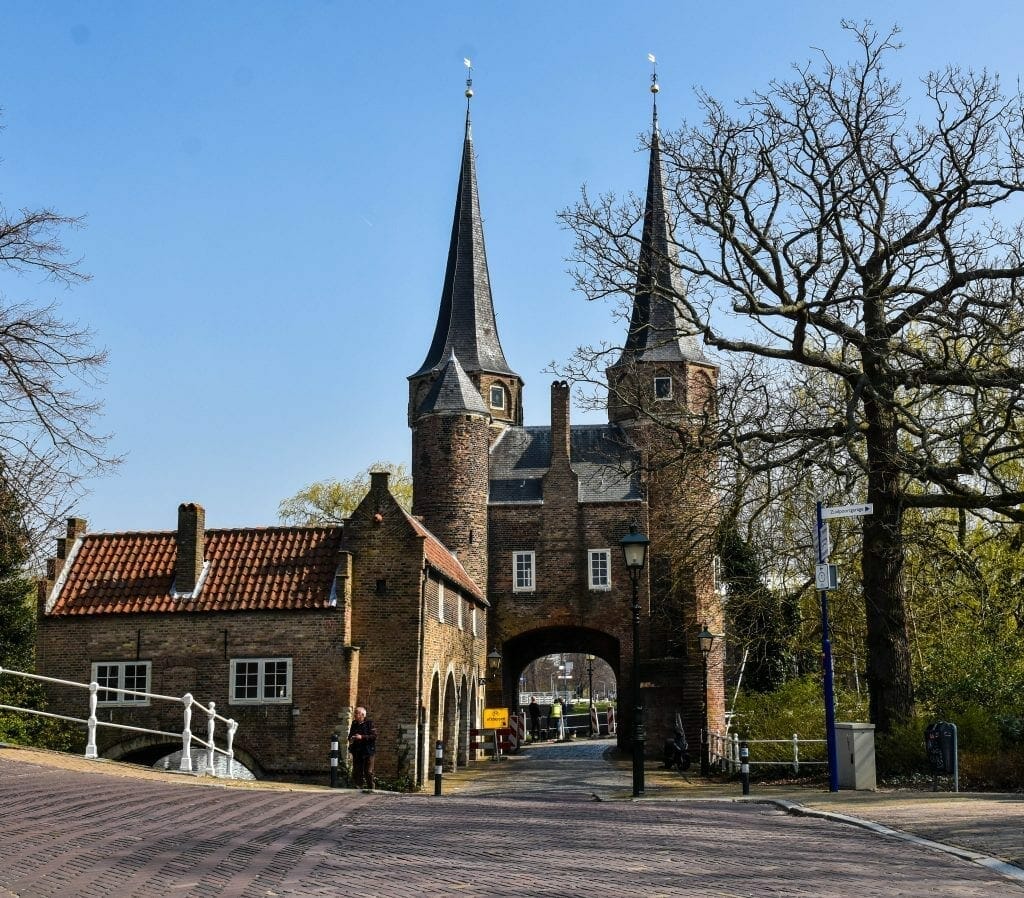

Our First Impressions
First impressions always leave a lasting mark on our perception of a destination. As we approached the striking, multi-spired Oostpoort, we felt that unmistakable sense of excitement, like discovering something truly special. Passing through the gate, we made our way toward the tallest church tower we could see, instinctively knowing it would lead us to the heart of the town.
As we strolled, we were captivated by the town’s beauty. The charming homes and cobbled walkways guided us along tranquil canals, creating a peaceful, laid-back atmosphere despite the city’s popularity and its population of around 100,000. Although our time was limited, with plans to be in Amsterdam later that evening, we couldn’t help but maintain a leisurely pace, eager to uncover the landmarks that promised to awe us—and they certainly did.
History Because to Know is to Understand
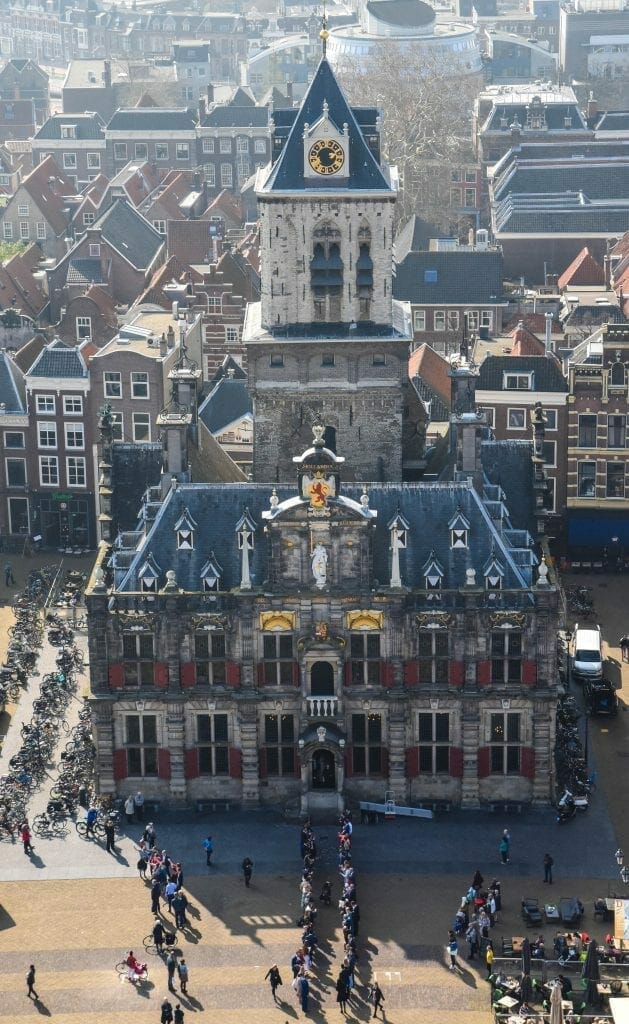

Delft’s history dates back to the 11th century when a Count established his manor beside a canal in an elevated area around 1075. This early settlement, along with several other significant events, laid the foundation for Delft’s growth into an important market town. The city’s central market square, one of the largest of its time, made it a hub of trade and commerce, solidifying its role in the region.
In the early Middle Ages, Delft was a small rural village that quickly transformed into a bustling urban center. The city’s official rise began in 1246 when Count Willem II granted Delft its city charter on April 15th. The town continued to thrive, and in 1389, the Delfshavensche Schie canal was dug to connect Delft to the river Maas, creating the port of Delfshaven. This new waterway linked the city to the sea, boosting its prosperity and facilitating trade. The canals that were integral to this development still define Delft today, giving the town a distinctive European charm.
However, Delft’s growth was not without hardship. In 1536, a massive fire devastated a large portion of the town. Despite the destruction, many buildings from the 16th century remain, particularly in the Wynhaven, Koornmarkt, and Voorstraat districts. These surviving landmarks contribute to Delft’s unique character, blending centuries of history with modern life.
William of Orange


The town’s association with the House of Orange started when William of Orange (Willem van Oranje), nicknamed William the Silent, took up residence in 1572 in the former Saint-Agatha convent (later called the Prinsenhof). Prince Willem van Oranje (William of Orange) was the founder of Dutch independence. He led the growing Dutch resistance against Spanish occupation, known as the Eighty-Year War.
By then, Delft was one of the leading cities of Holland and served as a headquarters because of its city walls, which offered protection. During the Battle of Delft in October 1573, those walls fended off an attack by Spanish forces.
In 1581, after the Act of Abjuration was proclaimed, Delft became the de facto capital of the newly independent Netherlands as the seat of the Prince of Orange.
Sad End to the Dutch Founder
William of Orange was assassinated on July 10th, 1584, by Balthazar Gerards in the hall of the Prinsenhof (now the Prinsenhof Museum). The family’s traditional burial place in Breda was still in the hands of the Spanish. Therefore, he was buried in the Delft Nieuwe Kerk (New Church), starting a tradition for the House of Orange that has continued today—an inscription to the right by the staircase on the first floor where the assassination occurred. A sad memorial attaches to the Prinsenhof, on the Oude Delft, as the scene of his death.
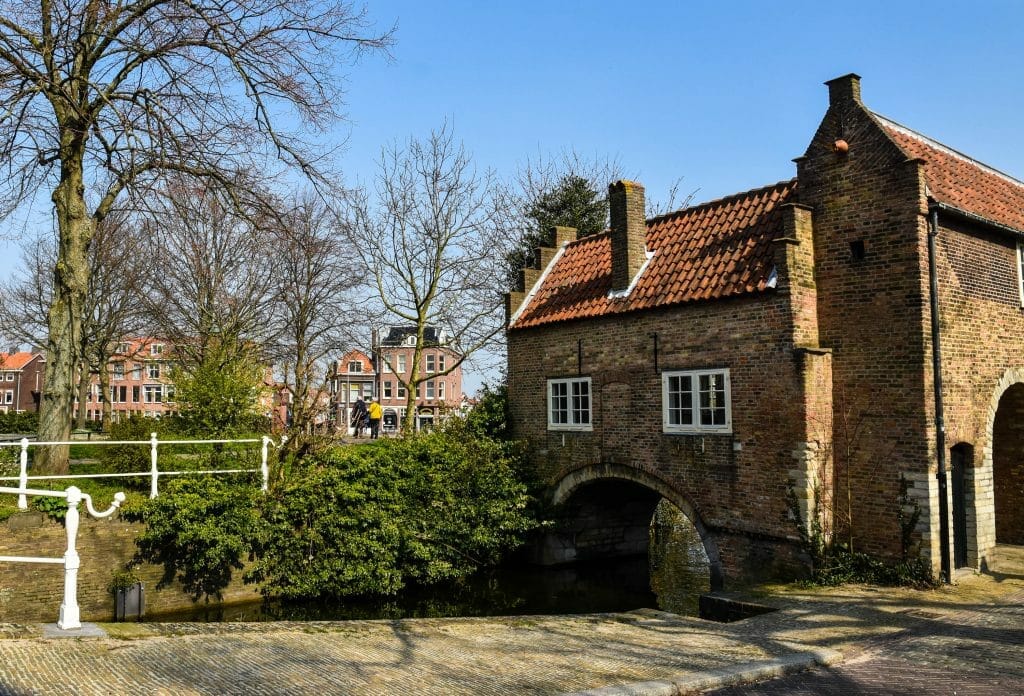

The Delft Explosion
Another tragedy hit Delft on October 12th, 1654. The Delft Explosion, also known as the Delft Thunderclap, occurred when a gunpowder magazine with around 66,000 pounds of gunpowder stored in barrels exploded, destroying much of the city. It was a former Clarist convent in the Doelenkwartier district, where the Paardenmarkt is now located. The magazine keeper, Cornelis Soetens, opened the store to check a powder sample, and a massive explosion followed.
More than a hundred people were killed, while thousands were left injured. Luckily, many citizens were away from the city that day, or the toll would have been much higher. Today, the explosion is primarily remembered for killing Rembrandt’s most promising pupil, Carel Fabritius, and destroying almost all of his works. Delft artist Egbert van der Poel painted several pictures of Delft, showing the devastation.
Fun Facts
This city is home to some brilliant minds and artists in history. Here are a few.
- Delft is the birthplace of Hugo de Groot (also known as Grotius; 1583-1645), the statesman and popular scholar who laid the foundations for international law.
- The painters M. van Mierevelt (1567-1641) and Jan Vermeer van Delft (1632-1675). One of Vermeer’s most famous paintings is “View of Delft,” depicting his hometown.
- Anthony van Leeuwenhoek was the Father of Microbiology and the inventor of the microscope.
- Several notable artists based themselves in the city, including Leonard Bramer, Carel Fabritius, Pieter de Hoogh, Gerard Houckgeest, Emanuel de Witte, and Jan Steen.
- Dutch physician Reinier de Graaf received international attention for his discovery of the follicles of the ovary.
The Famous Blue Earthenware of Delft
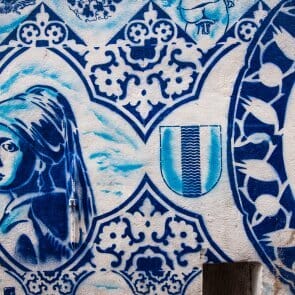

In the 16th century, Delft’s ceramic industry took a significant leap forward when several Italian potters, drawn by the city’s burgeoning economy and thriving trade routes, introduced a new style of glazed earthenware. This innovation led to the creation of what would eventually become one of Delft’s most famous exports: Delft Blue pottery.
The real turning point for the city’s ceramics came in the early 17th century, with the establishment of the Dutch East India Company (VOC) office in 1602. As the VOC established trade links with the Far East, Chinese and Japanese porcelain became highly coveted throughout Europe, influencing European pottery makers. Inspired by these imported goods, Delft potters began producing their versions of the delicate, blue-and-white porcelain known as “Delft’s Blauw” (Delft Blue). This distinctive style, featuring intricate blue designs on white pottery, quickly became celebrated across Europe, marking a period of extraordinary prosperity for the city. The delicate craftsmanship and unique aesthetic of Delft Blue pottery made it highly sought after, further elevating the city’s cultural and economic stature during the Golden Age of the Netherlands.
However, as the centuries passed, Delft Blue’s popularity waned, and the pottery industry fell into decline. Despite this, a revival took place in the 19th century, bringing the distinctive pottery back into the spotlight. Today, Delft Blue remains one of the city’s most iconic symbols, with local workshops continuing to produce this world-renowned craft. The timeless beauty and craftsmanship of Delft Blue pottery ensure that it remains a cherished part of the city’s heritage, still admired and celebrated by collectors and visitors alike.
12 Things to See and Do in Delft, Netherlands
Delf is a city full of life and energy. With so many activities, any visitor could stay occupied for days. The day we were there was early Spring and quite chilly, but people enjoyed the outdoors as if it were summer. Looking closely at the photos, people looked relaxed in the sunshine despite the cool temperature.
During our visit, we barely touched the surface of all Delft has to offer. We hope to get back one day and give it the time it deserves. Here are the top suggestions of what to do if you are lucky enough to visit this Dutch gem.
1. Nieuwe Kerk (New Church)











To understand the history of the Netherlands, a visit to Nieuwe Kerk (New Church) is a must. Here, the father of the Netherlands, William of Orange, is buried, and subsequently, all the House of Orange royals found their resting place in Nieuwe Kerk.
The Nieuwe Kerk choir contains a magnificent monument by Hendrik de Keyser (1608-19), erected by the United Provinces to the memory of William of Orange. The interior of the church is quite understated but elegant, and the stained glass windows are intricate and impressive.
But best of all is the view after you’ve climbed the 375-foot-high tower with a magnificent view of the city. On bright days, you’ll even be able to see Rotterdam and The Hague. Ryan took all the cityscape photos from the high tower in this post. In front of the church, in the marketplace, is a bronze statue of Hugo Grotius by Th Stracké, which was erected in 1886.
2. Market Square
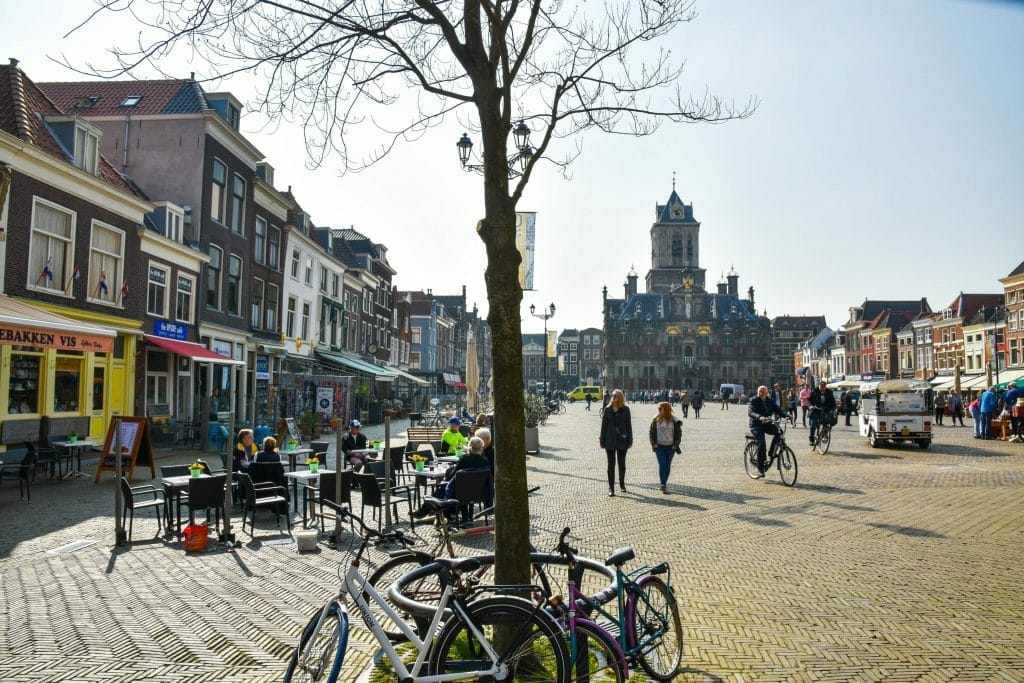

Wandering the Delft market square is a real treat. On Saturdays, it’s easy to stock up on Dutch souvenirs by simply checking out all the stalls: cheeses, cookies (fresh stroopwafels!), and poffertjes: a food festival all in itself. The day we were there, there was a cobbler in the square making Dutch wooden clogs, a commonly recognized symbol of the Netherlands. Of course, we could not resist buying some of his handiwork.
Of course, you can’t miss the grand Stadhuis, Delft (City Hall), built in the 17th century. On the west side of the marketplace, restored in the Renaissance style by H. de Keyser after a fire in 1618, is an ancient Gothic belfry.
Behind the most beautiful façade on the market, you’ll find Koos Rozenburgs’ shop, which has many fantastic antiques. What was most striking about the Square was all the people relaxing and enjoying the day’s beauty. It is a gathering place for this community.
3. Exploring Delft by Water: A Cozy Canal Adventure
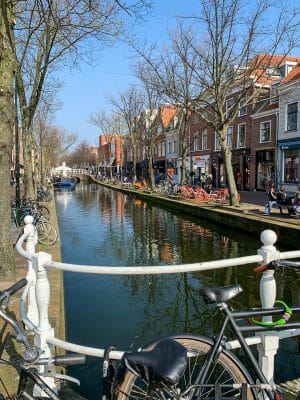

Delft’s canals offer a charming and intimate experience, especially when compared to the grand waterways of Amsterdam. A canal tour here is peaceful and relaxed, perfect for those looking to explore the city from a different perspective.
Boats depart every hour from Koornmarkt, and the tours last around 50 minutes, giving you the opportunity to admire Delft’s most beautiful sights from the water. It’s an ideal way to explore the city’s picturesque canals up close.
For a more active way to enjoy the water, consider renting a stand-up paddleboard or even taking a lesson. Whether you’re a beginner or a seasoned paddler, it’s a fun way to discover Delft from a unique angle.
4. Museum Prinsenhof
In Museum Prinsenhof Delft, you can discover the history of the Netherlands. The museum was the scene of one of the most important events in Dutch history: the assassination of William the Silent. William moved into the Saint Agatha monastery in 1572, which was then renamed Prinsenhof and eventually became the Delft Museum Prinsenhof. In July 1584, he was shot by Balthasar Gerards as he climbed the stairs to his office. You can still see the bullet holes in the wall of the museum.
In Museum Prinsenhof Delft, you journey through Delft’s rich past along with its artistic and cultural heritage. Museum Prinsenhof tells about the war, William of Orange, and displays beautiful paintings from the Golden Age. In the museum, you can learn about many of the famous residents of Delft, such as Johannes Vermeer, Michiel van Mierevelt, Antoni van Leeuwenhoek, and Hugo de Groot. Learn how centuries of trade and commerce, engineering, art, and science have brought prosperity to the Netherlands.
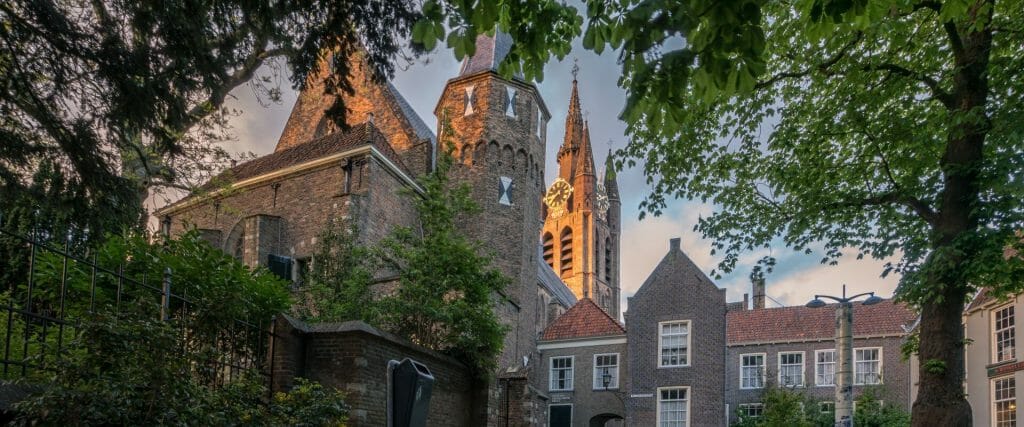

In the Netherlands, all primary school children will visit the Museum Prinsenhof at some point. The Netherlands began in Delft, and the children must know about their nation’s origins. It is a must-see when in Delft.
5. Royal Delft Museum
Royal Delft is the only remaining earthenware factory from the 17th century. Its workers make the world-famous Delft Blue ceramics. The painters perform their craft with passion and vitality, following centuries-old traditions.
In the museum, you can admire all the highlights of the iconic collection of Delft Blue and Royal Delftware, such as the blue and white tulip pyramid. During the Royal Delft Experience, you can discover the complete history and learn all about the production process of Royal Delftware.
You can’t leave Royal Delft without seeing how they make the famous Delft blue, so visit the famous factory. You will learn that the iconic Delft earthenware is painted black and gets its bright blue hue after being baked. During the tour, you’ll see painters at work and see the fantastic ceramic collection.
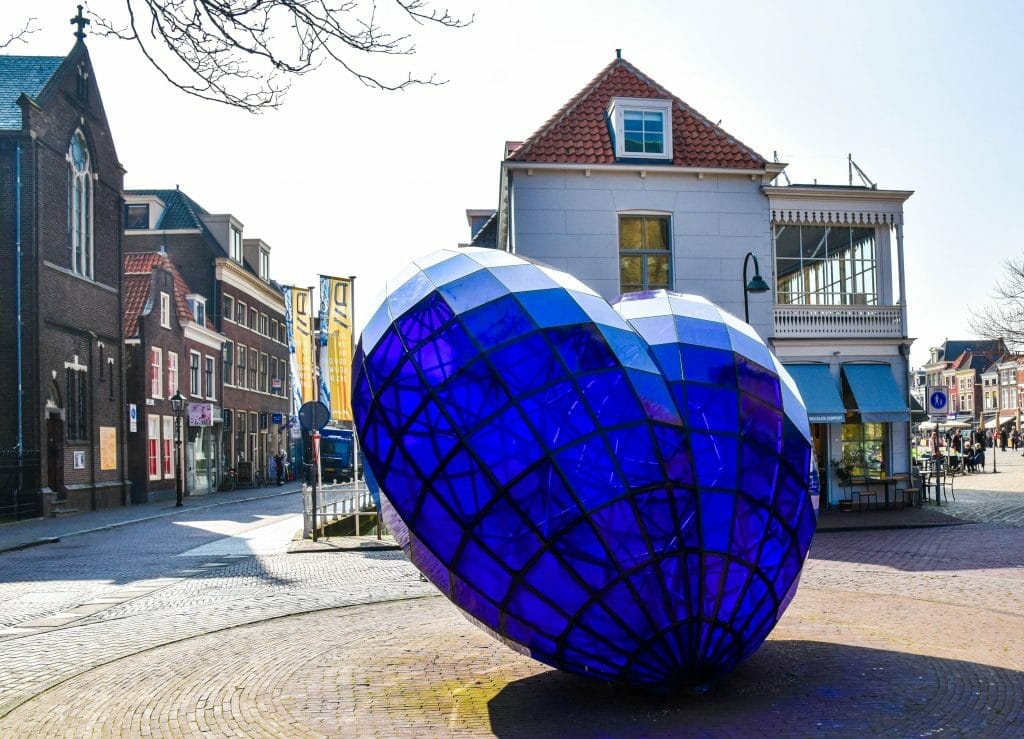

6. Vermeer Centrum
The Vermeer Centrum in Delft is the only place in the world where you can admire actual-size reproductions of Johannes Vermeer’s complete artwork. You can learn about Vermeer’s life, family, work, and the city that inspired him.
The master painter from Delft is particularly famous for his stunning depictions of sunlight. Step into the light studio, imagine you are Vermeer at work in the 17th century, and try to see if you can uncover his secret.
7. Take a Free Walking Tour
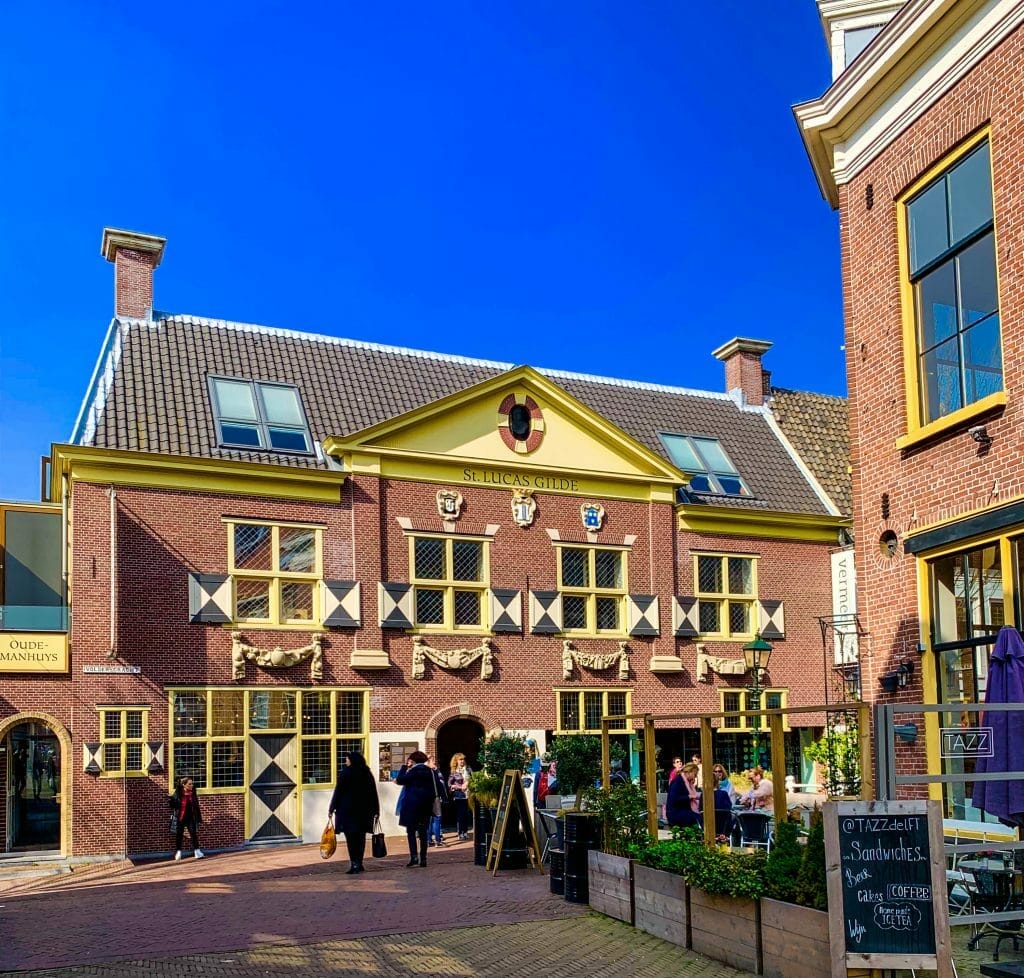

This city is excellent for walking, and you can choose from many free tours. Delft may be famous for its historic center with rows of impressive canal houses, but there are many other attractive sights to discover as you wander through the city. Some walking tours include:
- Delft Waterways and Canal System
- Following the Footsteps of Antoni Van Leeuwenhoek, the father of microbiology
- Delft Ceramics Route: Learn all about the world of this world-famous pottery
- Tu Nord is a stroll through a neighborhood with a beautiful collection of historical buildings with a rich heritage.
- Tu Nord’s 75 Years of Freedom reflects on the powerful stories from World War II.
- Famed artist Johannes Vermeer’s walk will lead you along to the places in the city center that played an essential role in the work of this mysterious Dutch artist.
8. Visit the Five Historic Churches of Delft
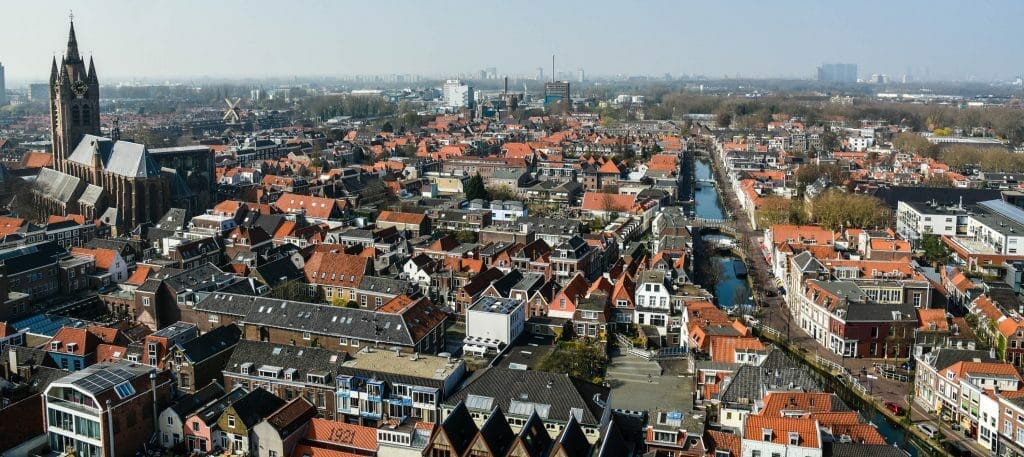

The Nieuwe Kerk (New Church)
The Nieuwe Kerk in Delft is renowned for its royal crypt, where nearly all members of the Dutch Royal Family are laid to rest. The most famous tomb is that of William of Orange, also known as William the Silent, the “Father of the Fatherland.” Another notable grave in the church is that of the renowned law scholar and writer Hugo de Groot.
In addition to its historical significance, the views from the church tower are truly spectacular, offering a breathtaking panorama of Delft and its surroundings.
The Oude Kerk (Old Church)
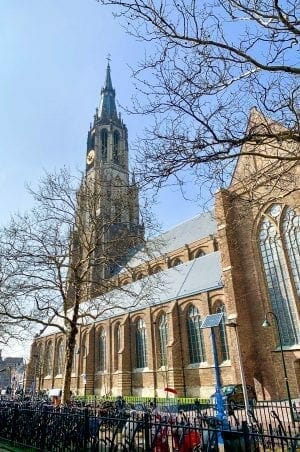

The Old Church has been given the nickname ‘Tipsy John’ (Scheve Jan) for a good reason! It leans heavily to one side and has a distinct tower bend. At the time, the people of Delft were not aware that they were building the tower on an old canal that had been filled in. They discovered this during construction and decided to build ‘vertically’ again on top of the section already leaning to the side, which explains the bend in the church tower that we can still see today. Fortunately, the church has now been fully stabilized. Buried here: Piet Hein, Johannes Vermeer, Anthony van Leeuwenhoek.
Maria van Jessekerk on Burgwal
It is a striking building because this church has not one but two towers – which is quite unusual for a church. Furthermore, the towers also differ from each other architecturally. Learn the story behind the towers here and admire the beautiful interior.
St. Hyppolytus Kapel
This is one of the oldest buildings in Delft! The chapel was built at the beginning of the 1400s and was used for various functions in later centuries. Initially, the chapel was part of the Heilige Geest Zusterhuis (an almshouse and hospital run by a community of devout women). After that, it was used as a storehouse for weapons. The restoration began at the beginning of the 1900s, and the Roman Catholic church started to use it as a place of worship.
Waalse Kerk on Agathaplein (the Chapel of the St. Agathaklooster)
The church has not been used for worship for a long time, but was formerly used as a chapel by the court of William of Orange. Many of his grandchildren are buried here instead of with their families in the Nieuwe Kerk.
9. Molen de Roos
Molen de Roos is a conspicuous landmark when visiting Delft. It is the only remaining windmill of the 18 that used to operate in Delft. Windmill De Roos, a tower mill built in the 1760s, was restored to working order in 2013. Delf still uses wind power weekly in the De Roos mill to grind organically grown grain down to flour. You can enter the mill to see the mechanism and enjoy a beautiful view over Delft from the upper platform.


10. Search for Street Art
Delft is a city known for its street art. Klokseeg, a short walk from the station, transports you into the world of street artist Micha de Bie. His work includes icons of Delft, such as Hugo de Groot, Antoni van Leeuwenhoek, and Vermeer’s Milkmaid. The rest of the alley has been decorated with a color block pattern inspired by the colors that frequently appear in Pieter de Hooch’s paintings.
11. Botanical Gardens
Delft is a city brimming with charming parks and gardens, offering peaceful spots for relaxation and enjoyment. One of the standout attractions is the Botanical Garden, a serene oasis where visitors can explore an impressive variety of plants, including specimens from tropical regions, alongside centuries-old trees. This lush garden provides a quiet escape from the city’s hustle and bustle. Located next to Delft Technical University, the botanical garden is a perfect place to immerse yourself in nature, whether you’re admiring the diverse plant life or simply enjoying the tranquil surroundings. It’s a must-visit for nature lovers and those seeking a moment of calm in the heart of Delft.
12. Cycling in Delft, Netherlands


There is a lot of biking happening in the Netherlands. For all practical purposes, it is the most common form of transportation. It is a popular activity among tourists and allows you to see more of the city faster. Please become familiar with the local rules of the road, and DO NOT DO what the above picture shows.
Shopping and Eating in Delft
Delft offers a variety of shopping options, but one of the most sought-after treasures is Blue Delft china. Royal Delft, also known as De Porceleyne Fles, stands as a hallmark of the city’s rich ceramic heritage. This renowned factory not only showcases the art of Delftware but also offers visitors the opportunity to purchase authentic pieces of the iconic blue-and-white pottery. It’s a must-visit for those wanting to take a piece of Delft’s craftsmanship home.
As we explored the city, we made sure to visit a range of restaurants, cafes, and bars to sample the local cuisine and brews. The vibrant atmosphere was heightened by the gorgeous spring weather, which seemed to invite everyone to enjoy the outdoors. The streets were alive with the sounds of laughter and conversation as locals gathered in groups, sharing drinks and meals. It’s clear that socializing over food and drink is a cherished tradition in Delft, and we couldn’t help but join in the lively spirit of the city. Whether at a cozy cafe by the canal or a bustling outdoor terrace, the sense of community and warmth was palpable, making the experience all the more enjoyable.


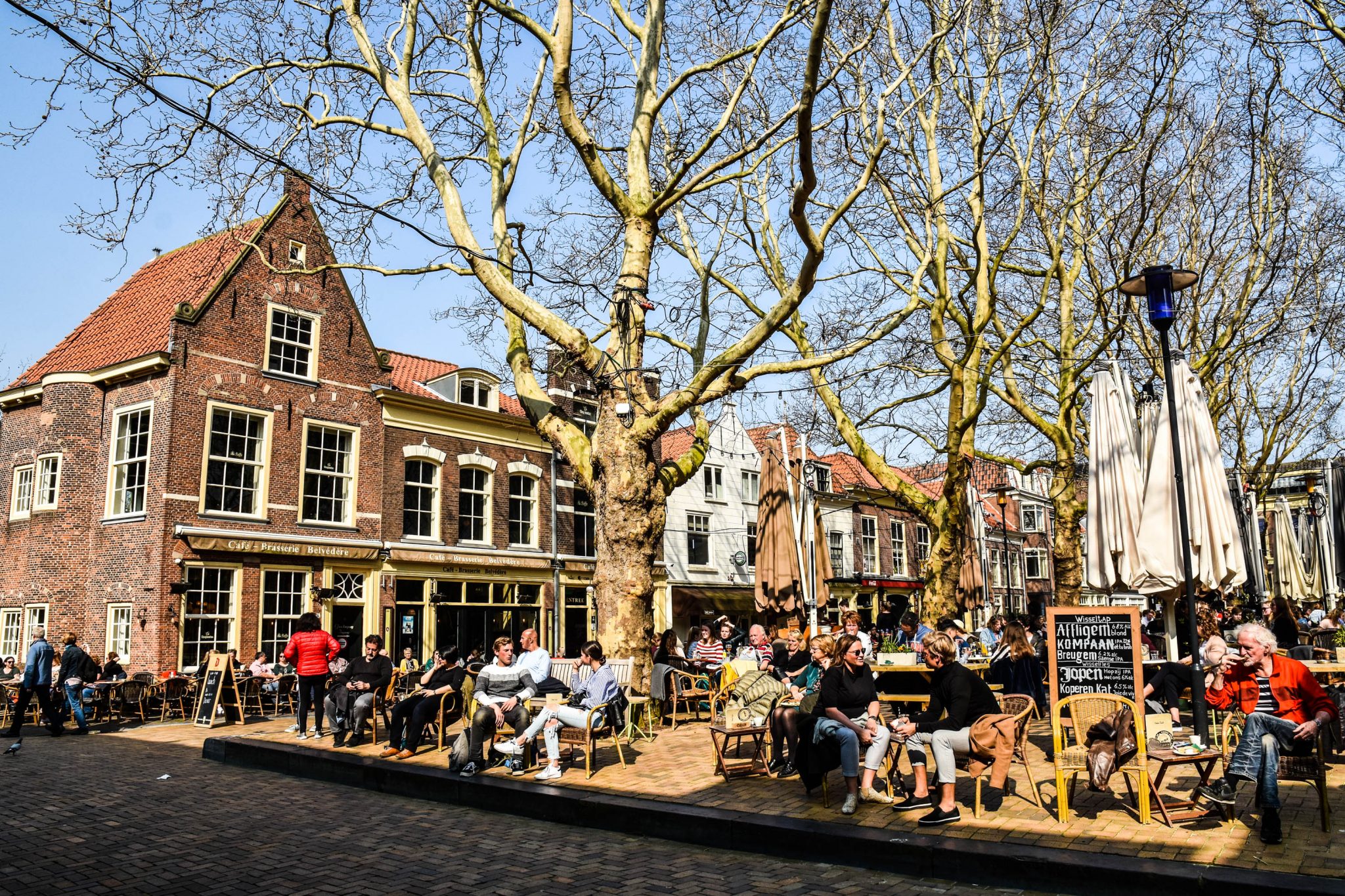
Want to learn more about The Netherlands? Check out our Netherlands Travel Guide
Where to Stay in Delft, Netherlands
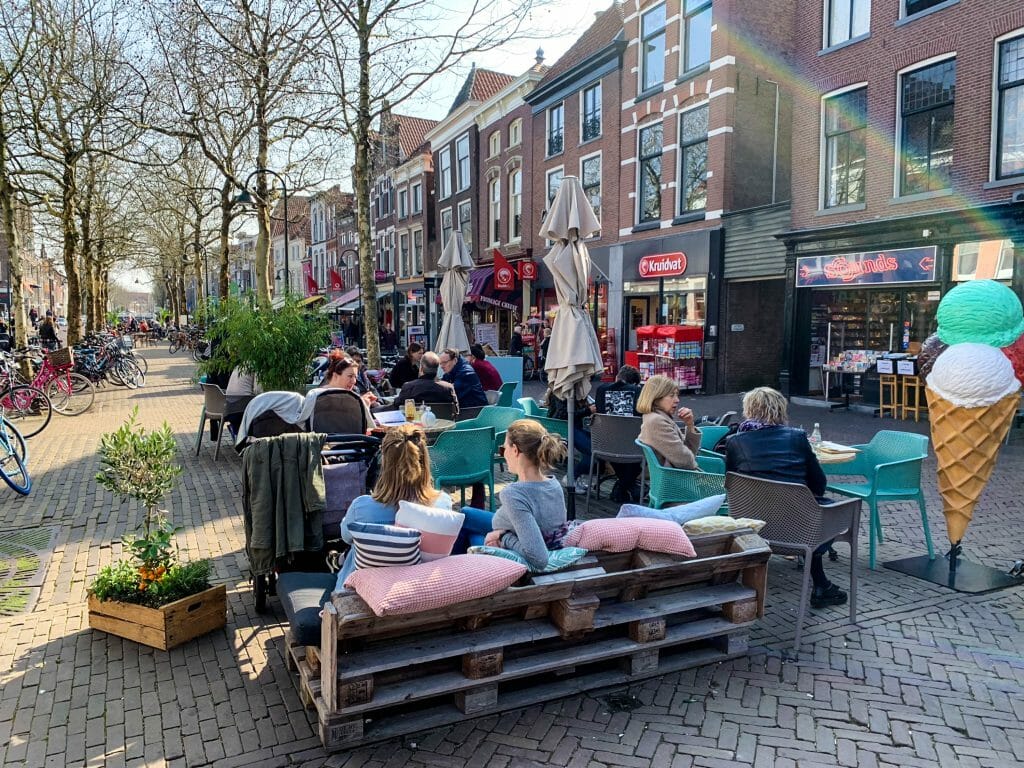

There is a wonderful collection of hotels and vacation rentals in Delft. We only came for a day’s visit, so we can’t speak about where to stay. We will plan an overnight next time. Below are links to Expedia, VRBO, and Booking.com to look at options. Make sure to look at recent reviews carefully. There are also camping and hostels available in the area.
It is important to price out accommodations on various sites. Expedia is a US-based company, whereas Booking.com is Europe-based. Not all properties appear on both, so it is ideal to check both out. Our personal first choice is Booking.com. If the establishment has a website, check the price there as well. Click the link below to check out hotels and vacation homes in the area. It may be just the motivation you need to start planning that next grand adventure.
Of course, you are not far from many of the major cities of the Netherlands. Amsterdam is about a 50-minute drive, Rotterdam is about a 20-minute drive, and The Hague is about a 16-minute drive. All have extensive and beautiful accommodations to enjoy. Click any of the links above and change the city you are viewing.
Want to download a free city map? Click here, courtesy of the Delft, Netherlands Tourist Office.
Getting to Delft, Netherlands
- You can get to Delft, the Netherlands, from Amsterdam Airport and Rotterdam/The Hague Airport. From Amsterdam and Rotterdam/The Hague airport, you’ll be able to reach Delft easily by train or bus in about an hour.
- Get to Delft by train, tram, or bus from anywhere within the Netherlands. You can buy a single-use ticket at the station, or you’ll need an OV chip card, which allows you to charge as you go.
- You can drive yourself, which is what we did. The roads and signage in the Netherlands are excellent, and we found parking easily on the street. Pay parking lots are also available.
- A visit to Delft is one of the most popular tour companies’ options, especially from Amsterdam. In a day, you can join a small group tour and discover the best of The Hague, Rotterdam, and Delft.
- Once in Delft, two tram lines run through the town, which will be the fastest way to move around town unless you rent a bike.
What is the Weather like in Delft?
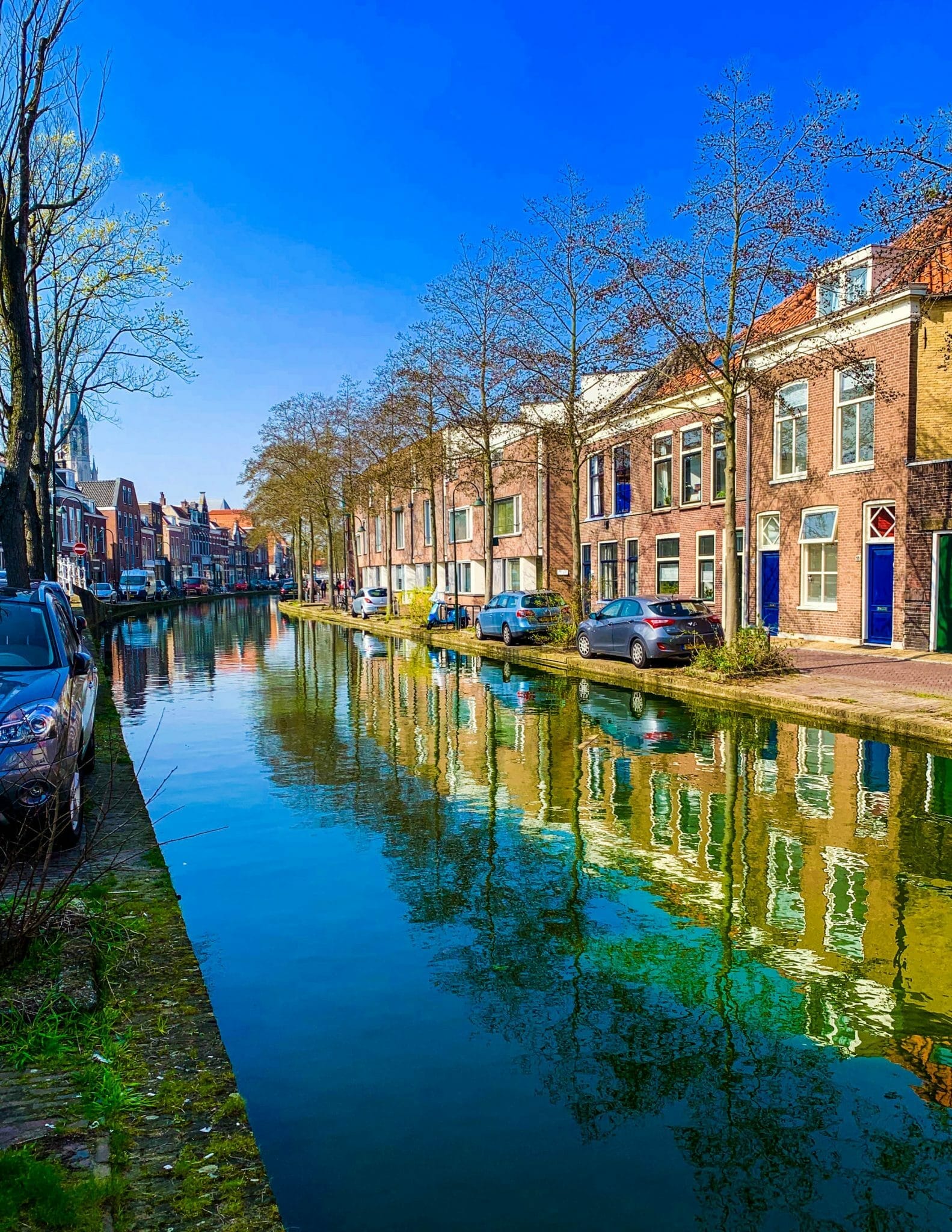

The Netherlands enjoys a mild sea climate, with summers that are never excessively hot and winters that are rarely harsh.
Both summer and winter bring pleasant, dry, and sunny spells, but the weather can also be unpredictable. Many days are marked by cloudy skies, wind, and occasional rain or snow during the winter months.
When visiting the Netherlands, it’s wise to prepare for all seasons. Be sure to pack sunglasses for sunny moments, an umbrella for rain, and some warm layers to stay comfortable in cooler weather.
Final Thoughts
During our brief visit to Delft, Netherlands, we found ourselves captivated by every aspect of the city. The architectural beauty beckons you to wander down narrow alleys, uncovering hidden corners that invite relaxation and admiration of the city’s understated charm. Every shop is worth a stop, showcasing unique local goods, while the cafes, bars, and restaurants tempt you with delicious local treats. Delft is one of those essential destinations in the Netherlands that you must experience. A day trip offers a taste, but staying longer allows you to thoroughly soak in the city’s serene atmosphere, especially when the canals take on a peaceful, almost magical quality at night, reminiscent of Amsterdam.
Make sure to include delightful Delft in your next adventure through the Netherlands—you won’t regret it!
© 2025 Wanderers Compass All Rights Reserved
Check out another Netherlands article: The Kinderdijk Windmills of the Netherlands.
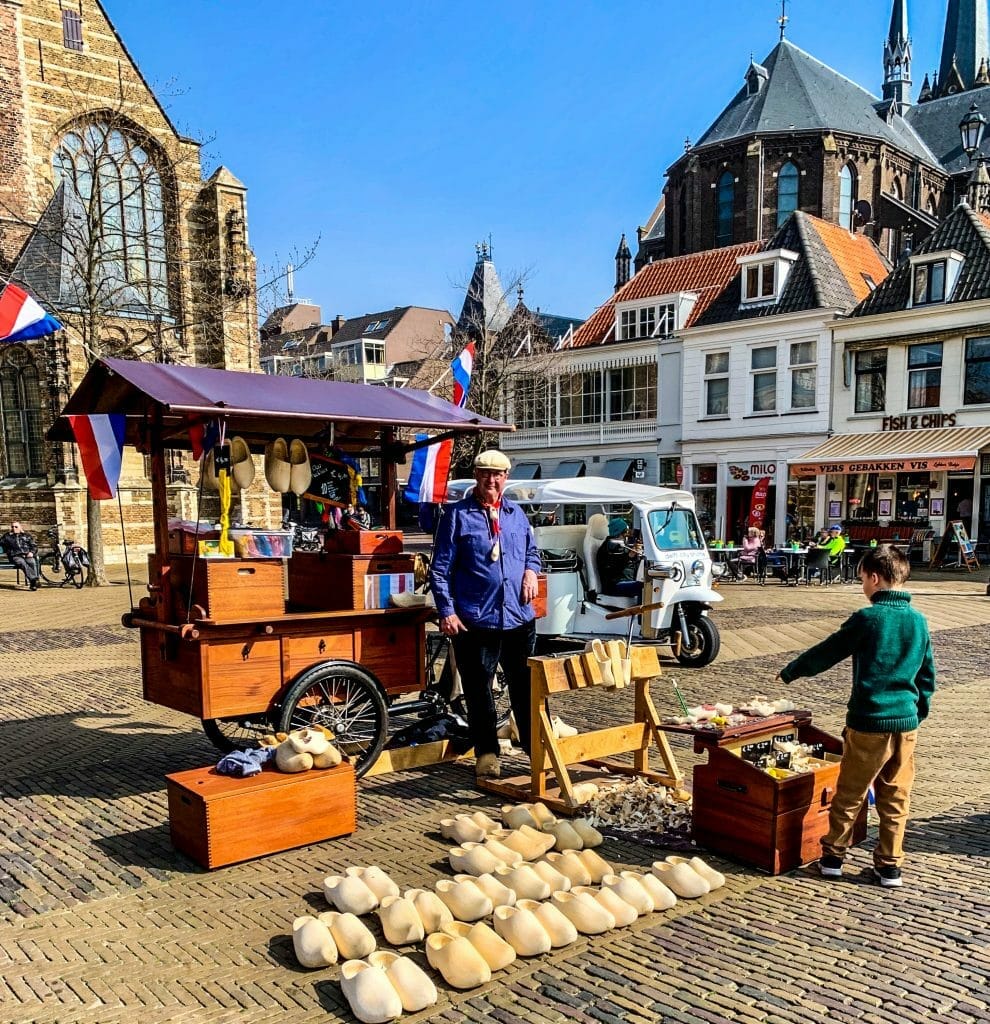

Check out the Official Tourism site for Delft, Netherlands, for more information.
Our Delft Photo Gallery






















Want to learn about Wanderers Compass?
Check out our top blog posts
Our Top Recommended Travel Products
Travel Insurance
Squaremouth.com
Our favorite travel insurance site!
We strongly advocate for comprehensive travel insurance, not only for minor inconveniences but also for major, unexpected events like medical emergencies. We never leave home without it. Our go-to resource is Squaremouth.com. which offers a user-friendly platform that connects you with top-rated, reputable insurance carriers. Plus, they’ll mediate on your behalf if you run into any issues.
To empower you as a consumer, we recommend you read our blog post on why travel insurance is essential and how to secure the best coverage from leading companies at an affordable price.
MedjetAssist
Medical transport back home from anywhere in the world
Medjet is a leading provider of global air medical transport. Unlike traditional travel insurance, which typically covers medical evacuation to the nearest facility, Medjet goes further by ensuring you’re transported back to the U.S. to the hospital of your choice once you’re stable enough to fly. Medjet offers membership plans that focus on medical transport, while Medjet Horizon provides expanded coverage for broader protection. Individual trip policies start at just $99, and annual policies are available for around $300. Most policies have an age limit of 74.
To learn more about how Medical Evacuation membership with Medjet Assist works, check out our blog post for a more detailed review.
Accommodations and Airfare
Booking.com
Hotels, Home rentals, BNBs, Flights, and other Transportation & Tours
Booking.com connects millions of travelers to unforgettable experiences, a wide range of transportation options, and incredible places to stay—from homes to hotels and beyond. As one of the world’s largest travel marketplaces, it supports well-known brands and entrepreneurs of all sizes. For its convenience, variety, and reliability, it’s our preferred booking platform.
Transportation
Expedia and VRBO
Hotels, home rentals, BNBs, flights, and other transportation & tours
Expedia is a U.S.-based company with a mission to make global travel accessible to everyone, everywhere. At Wanderers Compass, we embrace independent travel, and platforms like Expedia are essential to making that a reality. Expedia allows you to book every aspect of your trip—from flights and accommodations to rental cars, cruises, and activities—making it a one-stop shop for all your travel needs.
Daytrip
Personalized city-to-city private car transfer service
Daytrip provides an affordable private car service for city-to-city transfers worldwide, and we absolutely love their service. It’s a cost-effective alternative to renting a car, providing comfortable, stress-free travel with the bonus of scenic stops along the way. For example, we used Daytrip for travel between Budapest and Vienna, enjoying some fantastic detours to local attractions. With professional drivers and customizable routes, Daytrip ensures a smooth ride while allowing you to explore hidden gems and unique sights along your journey.
To learn more about how Daytrip, check out our blog post for a more detailed review.
Travel Experiences
Viator
The leading marketplace for travel experiences
Viator believes that travel is all about creating unforgettable memories. With over 300,000 experiences to choose from—ranging from simple tours to extreme adventures, plus a wide array of unique, niche activities—it’s never been easier to make lasting memories. We frequently use Viator during our travels and especially appreciate their flexible cancellation policy, which adds peace of mind to every booking.
Communication products for seamless connectivity overseas
GigSky International eSIM Data Plans
Local Prices. No Roaming. Fastest Networks.
GigSky eSIM effortlessly connects travelers around the globe, eliminating the need to swap physical SIM cards or deal with surprise roaming charges. With affordable data plans and instant activation, you can enjoy reliable internet access in over 190 countries, making your travel experience more convenient than ever. Plus, they offer a fantastic deal: a free 100 MB data plan with no credit card required. They are so confident that you will love their service!
Enjoy 10% off all GigSky Plans (except cruise and inflight) with our discount code WCOMPASS10.
To learn more about how GigSky works, check out our blog post for a more detailed review.
Shopping
Wanderers Compass Amazon Storefront
An excellent source for all travel essentials and guides that we have vetted ourselves
Amazon is one of the world’s most comprehensive online shopping platforms, offering lower prices, a wide selection, and fast delivery through teams worldwide.
This page contains affiliate links. When you purchase through these links, we may earn a small commission at no extra cost to you. Thank you for your ongoing support!

